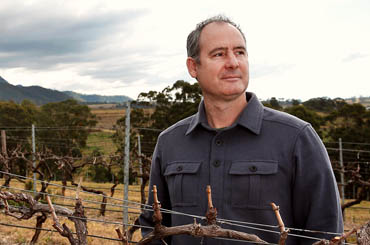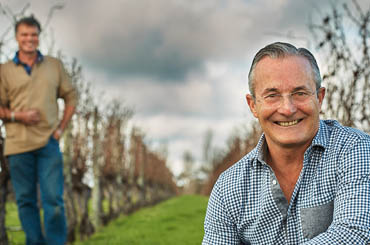There were two ways of seeking fame and fortune in the Victorian gold rush decades of the second half of the 19th century. One was to buy a miner’s licence, a high risk with an occasional high return. The other was to feed hungry miners and slake their thirst with wine and/or beer.
Brothers Joseph and Henry Best were in the latter camp, opening a butcher’s shop in Ararat. Realising it was only a question of time before the gold ran out, Joseph planted his first vines in 1862. As they grew and came into bearing, and the gold became scarcer, he employed out-of-work gold miners to excavate the massive underground drives (or cellars) of today’s Seppelt. Henry Best followed suit in 1866 by planting vines on a 30ha property he acquired at nearby Concongella Creek.
One 1.02ha experimental block had 32 varieties, including what is now the oldest pinot noir and pinot meunier in the world, but there was also a small block of 15 rows of shiraz planted in 1867.
It is commonplace for wineries to release an icon wine for the first time saying it will only be released in the best vintages, but then releasing it virtually every year. Since 1992 (the first release), this wine has been made in 14 vintages, and not made in nine. Indeed, since 1999 it has only been made every second year.
It’s obvious that the self-set standards have been stricter with a succession of highly qualified winemakers, none more so than present incumbent Justin Purser (and before him, Adam Wadewitz). The fruit selection is rigorous; some of the fruit from the 15 rows was discarded, replaced by fruit from mature vines grown by cuttings taken from the old block.
That the wine is not ‘stretched’ with younger material is self-evident given the number of years it is not made at all, and that 2200 bottles were made in 2014, compared with (for example) 4200 in 2010.
It is open-fermented in small tubs, and matured for 18–24 months in French oak; there is no recipe for the percentage, nor for the percentage of new oak (usually around 50%, but can be higher).
It is handled with kid gloves in the winery, as the tasting note on page 110 shows. It is a truly glorious wine.
Brothers Joseph and Henry Best were in the latter camp, opening a butcher’s shop in Ararat. Realising it was only a question of time before the gold ran out, Joseph planted his first vines in 1862. As they grew and came into bearing, and the gold became scarcer, he employed out-of-work gold miners to excavate the massive underground drives (or cellars) of today’s Seppelt. Henry Best followed suit in 1866 by planting vines on a 30ha property he acquired at nearby Concongella Creek.
One 1.02ha experimental block had 32 varieties, including what is now the oldest pinot noir and pinot meunier in the world, but there was also a small block of 15 rows of shiraz planted in 1867.
It is commonplace for wineries to release an icon wine for the first time saying it will only be released in the best vintages, but then releasing it virtually every year. Since 1992 (the first release), this wine has been made in 14 vintages, and not made in nine. Indeed, since 1999 it has only been made every second year.
It’s obvious that the self-set standards have been stricter with a succession of highly qualified winemakers, none more so than present incumbent Justin Purser (and before him, Adam Wadewitz). The fruit selection is rigorous; some of the fruit from the 15 rows was discarded, replaced by fruit from mature vines grown by cuttings taken from the old block.
That the wine is not ‘stretched’ with younger material is self-evident given the number of years it is not made at all, and that 2200 bottles were made in 2014, compared with (for example) 4200 in 2010.
It is open-fermented in small tubs, and matured for 18–24 months in French oak; there is no recipe for the percentage, nor for the percentage of new oak (usually around 50%, but can be higher).
It is handled with kid gloves in the winery, as the tasting note on page 110 shows. It is a truly glorious wine.
Sign up to view these tasting notes and ratings
By becoming a member of Wine Companion, you'll have access to the largest database of wines in Australia.







